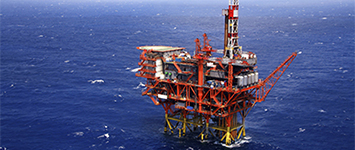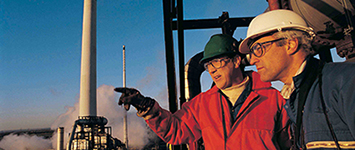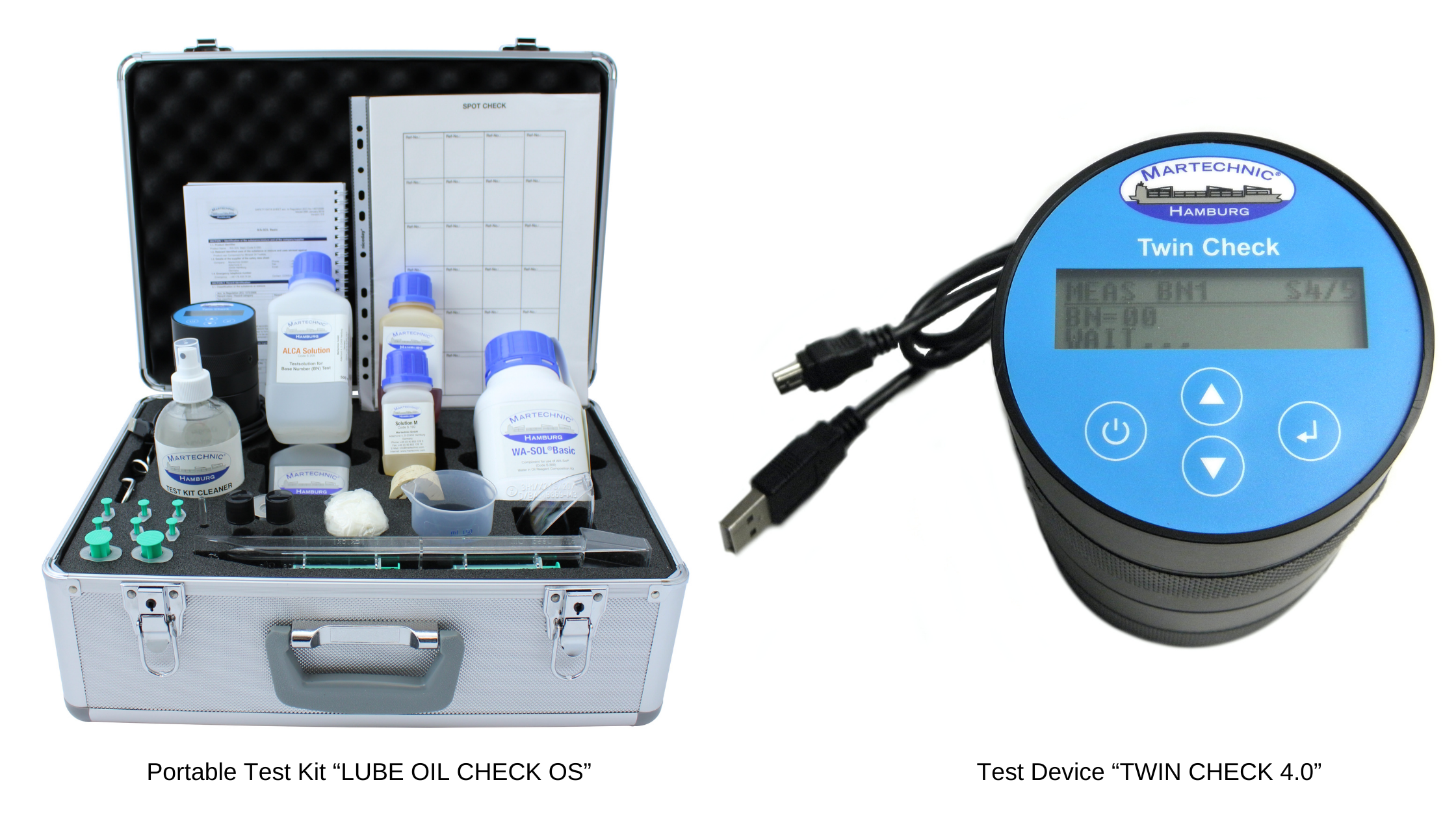Offshore oil and gas production platforms require reliable condition monitoring programs of lubricants and fluids to provide continuous and safe operation of the critical offshore machinery under harsh environmental conditions. Due to their remote location, oil and gas platforms may not be easily reached by highly trained personnel to make equipment replacement in case of machinery failure. Any major breakdown can substantially hinder the work of a platform or might pose a safety hazard to the operating crew. Moreover, repairs in offshore oil and gas industry can be very expensive and time consuming. In opposite, application of on-site oil analysis program to monitor the condition of essential parameters of lubricating oil and fluids is easy, smart and cost-effective solution which can be adopted as a part of the successful equipment maintenance strategy, i.e. machinery and hydraulic systems required for energy production for offshore oil and gas platforms (e.g. diesel engines, gearboxes, turbines, pumps, compressors etc.).
Alternative Approaches to Oil Analysis for Optimization of Machinery Condition Monitoring
As a rule, the prevailing practice of oil analysis for monitoring the operating condition of the equipment presumes oil sampling every two to three months and using an onshore laboratory for analyzing specific oil parameters. However, taking into account offshore and remote location of oil and gas platforms, the laboratory results may not reach the operating personnel and technicians responsible for equipment maintenance for several weeks. Such delays in obtaining oil analysis results may lead to failures in identifying existing maintenance issues at the right time and cause unexpected downtime of the machinery.
An alternative approach to oil analysis is the adoption of on-site oil condition monitoring programs through the mechanism of regular or continuous assessment of the critical oil parameters of lubricants and fluids such as water-in-oil, alkalinity reserve, viscosity, acid number, the presence of insoluble and metal particles etc.
Martechnic offers two different oil condition assessment techniques that can be used for maintaining operational equipment of offshore oil and gas platforms:
- Regular interval-based determination of lubricants’ condition with the help of portable test devices;
- Intelligent monitoring with sensor technology for an unattended machinery space.
The main advantage of these analyses methods is the possibility to provide accurate information on the actual condition of the lubricating or hydraulic oil in use and to detect any occurring irregularities or abnormal processes prior to unexpected catastrophic failures.
Portable Testing Equipment: Trend Analysis of Oil Condition
Regular oil condition monitoring with portable testing equipment is an easy and quick on-site method which provides almost immediate and high accuracy test results. The operating personnel is able to routinely check crucial parameters of lubricants and hydraulic fluids. When individually establishing monitoring intervals for each oil parameter of interest, technicians collect data for tracking trends in the oil condition to make a prognosis and accordingly to plan efficiently on necessary maintenance time.
If an abnormal oil analysis test result is obtained, a repetitive measurement can be conducted by the crew to confirm the accuracy of the measured parameter before a further corrective action should be considered. This can help to reduce expenses and/or predict potential problems or equipment failures prior to their occurrence.
The test kit “LUBE OIL CHECK OS” of Martechnic combines portable test devices for five different on-site lube and hydraulic oil tests that are crucial for condition monitoring and maintenance of the key machinery of oil and gas platforms.
Water-in-oil and alkalinity reserve of lubricants can be measured with the test device “TWIN CHECK 4.0”. The test device measures automatically and precisely both parameters through the built-in pressure sensor which registers pressure build-up in accordance with the degree of water concentration/ BN value in the oil under examination. The “TWIN CHECK 4.0” is offered in modular design with possibility to replace every single constituent part and has a USB to serial cable connection and memory chip for data storage and trend analysis.
Alongside water-in-oil and BN monitoring, the “LUBE OIL CHECK OS” offers a quick “go/ no go” viscosity test to immediately identify any deviation from standard viscosity values. Spot test can help to regularly determine occurring changes in the oil condition and is primarily used for assessing the level of soot contamination of engine lube oil.
With respect to hydraulic systems of the oil platforms high operating temperatures or ingress of aerial oxygen can lead to oxidation and nitration of hydraulic fluids and occurrence of acid sludge. Early detection of increased acid value with the test “MT AN CHECK” can help to avoid further degradation and to protect machinery through scheduled maintenance.
Intelligent Sensor Technology: ConditionBased Maintenance of Complex Machinery and Hydraulic Systems
Remote location of oil and gas platforms and often scarce operating personnel resources for regular oil condition monitoring of complex machinery and hydraulic systems may be the factors to prioritize an installation of permanent oil condition monitoring devices, i.e., intelligent sensor technology.
In contrast to portable testing equipment, permanently installed in-line sensors provide continuous 24/7 oil condition assessment, when principal oil parameters are monitored in the real-time mode. Automated alerts with early warning system provide immediate notification of occurring changes of the oil parameters and enable maintenance crew to analyze the problem and to take necessary maintenance measures at the pre-alarm level during the uninterrupted operation process of machinery. In its turn, equipment maintenance intervals can be optimized and possibly prolonged.
Martechnic designed and developed an innovative MT MODULAR MONITORING SYSTEM for comprehensive and continuous oil condition assessment. The principal benefit of the system is its modular design, namely the possibility to customize a version suitable for a specific field of application in accordance with individual requirements and to install the sensors into specific machinery components (generators, gearboxes, mud pump bearings, hydraulic system etc.) depending on the oil parameters to monitor.
Appropriate lubrication is the prerequisite for flawless functioning of machinery components. Due to increased humidity of marine environment, lubrication system may be exposed to moisture condensation and occurrence of water.
Continuous measurement of water-in-oil content, for instance in gearboxes, can be made with the infrared AHHOI IR SENSOR. The sensor measures water concentration in molecular form in the range of up to 10000 ppm / 1.0 vol. % and enables determination of water in all three states: saturated, emulsified and free. The sensor is installed in the bypass and can be equipped with manifold for simultaneous monitoring of up to four different oil systems.
HUMIDITY SENSOR can be applied for generators and will enable determination of any unexpected rise in the level of relative humidity of oil in % (ranging from 0 % - no water detected to 100 % - complete saturation/ existence of free water) through continuous measurement of the degree of oil saturation with water.
PARTICLE SENSOR is useful for immediate detection of the increased degree of concentration of insoluble particles in oil. FE SENSOR helps to monitor oil system contamination with ferromagnetic particles.
Simultaneous application of several permanently installed condition monitoring sensors and their connection to the special display unit DATALOGGER for continuous data recording and assessment can offer a reliable and secure solution for conditionbased maintenance of complex machinery and hydraulic systems.
Conclusion
On-site oil analysis and adoption of oil condition monitoring programs can be considered essential for managing safe, continuous and efficient operation of critical machinery of offshore oil and gas platforms. Implementation of a preventive maintenance strategy with well-planned maintenance intervals may help to optimize the overall performance of the operating equipment and to contribute to providing of uninterrupted production of oil and gas platforms, therefore also effectively protecting the marine environment.
For more information on condition monitoring of lubricating and hydraulic oil, please contact Martechnic:
Martechnic GmbH
Phone: +49-40 853128-0
Fax: +49-40 853128-16
E-mail: This email address is being protected from spambots. You need JavaScript enabled to view it.
Web: http://www.martechnic.com








